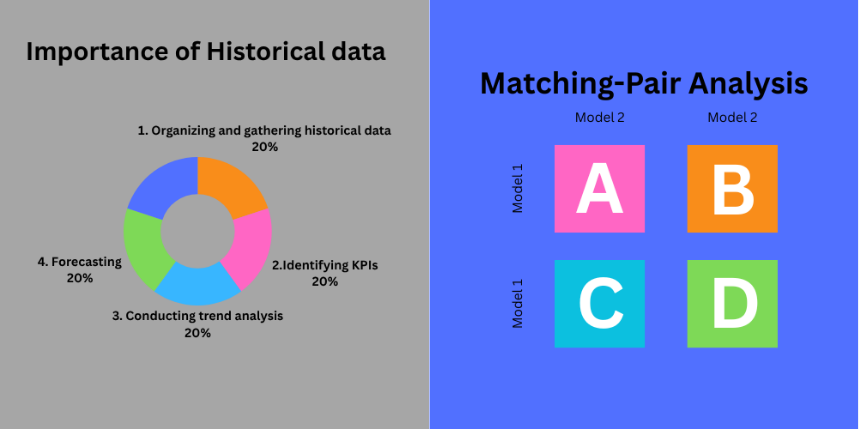"How important is historical data, and what are the consequences of pairing mismatched data?"
In this blog, we explore the importance of historical data and how it can be leveraged to inform today’s decisions and influence outcomes. We also examine the impact of improper data pairing, highlighting its potential drawbacks, and discuss best practices for effective data pairing to build a strong and reliable business model.
10/13/20251 min read


Historical Data Analytics
Historical data analytics involves examining past data to identify patterns, trends, and insights that can inform current and future decision-making. By analyzing historical performance, businesses can understand what strategies worked, anticipate future outcomes, and reduce uncertainty. This type of analysis plays a crucial role in forecasting, benchmarking, and building models with higher confidence levels. When used effectively, historical data becomes a strategic asset for driving growth and optimizing operations.
The importance of historical data lies in its ability to support repeated inferences—if a conclusion is drawn from a specific dataset, that inference can often be reused in future scenarios. Even when a particular inference isn't immediately relevant to the current business context, it can still contribute to building confidence intervals for generating new insights.
Matching Pair Analysis
Matching Pair Analysis is a statistical technique used to compare two related sets of data by pairing observations that are logically or contextually linked. This method ensures that comparisons are made between data points with shared characteristics—such as time, location, or user behavior—allowing for more accurate and meaningful insights.
In business and data science, matching pair analysis is often used to:
Measure the impact of a treatment or intervention (e.g., before-and-after comparisons)
Reduce variability by controlling for confounding factors
Improve model reliability by aligning data points with similar attributes
Effective pairing is critical. Poorly matched pairs can lead to misleading conclusions, skew confidence intervals, and negatively impact performance metrics. Well-matched data pairs, on the other hand, strengthen the integrity of analysis and support more confident decision-making.
Furthermore, data pairing must be done carefully to support the business model. Ideally, the pairing should yield a 90% confidence interval trending toward the positive side of the distribution, indicating strong, favorable outcomes. However, if the same pairing results in a 90% confidence interval trending toward the negative side, it can negatively impact the business model and distort key performance metrics.
Insights
Leveraging data to drive informed decision-making strategies.
© 2025. All rights reserved.
